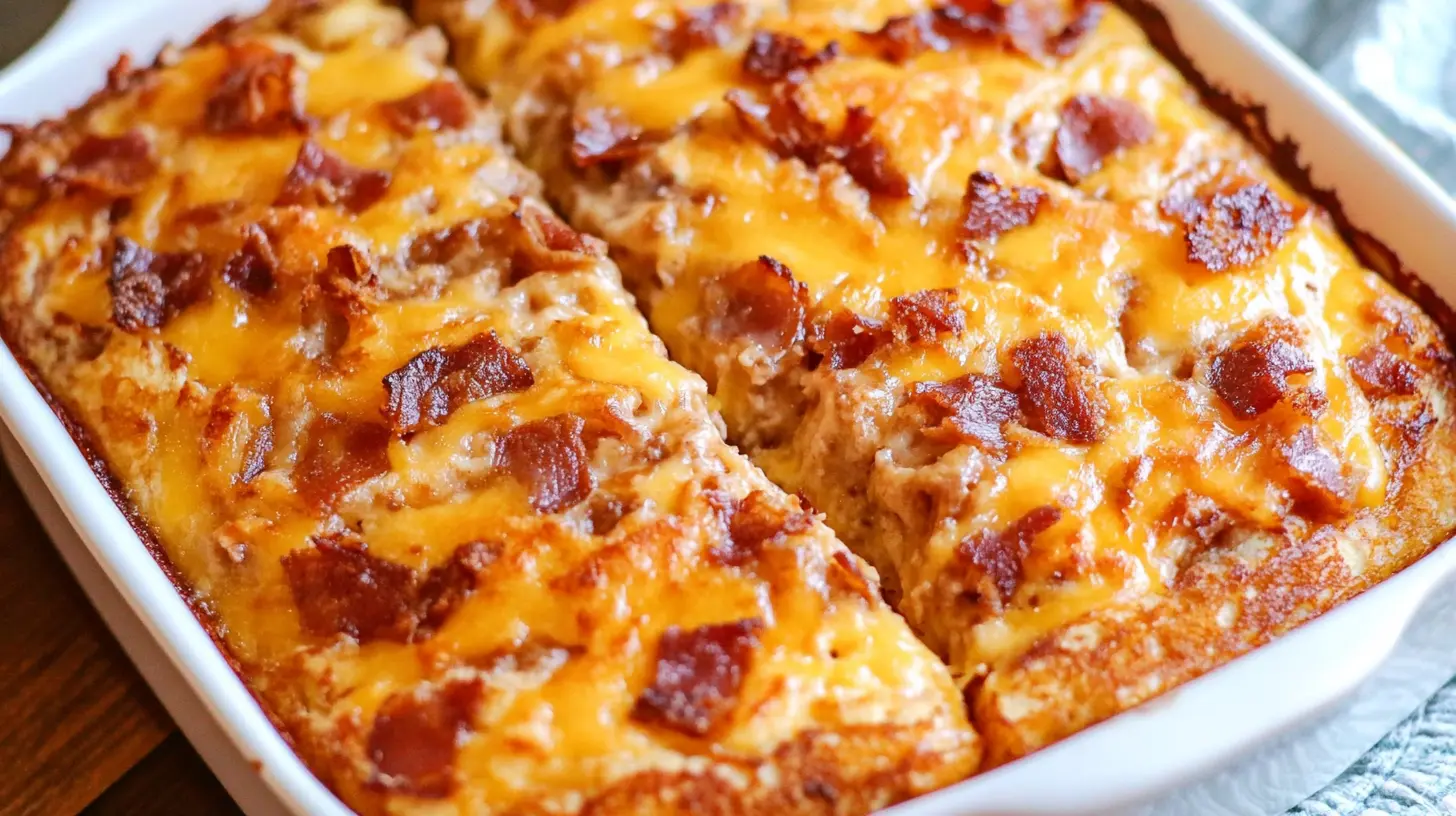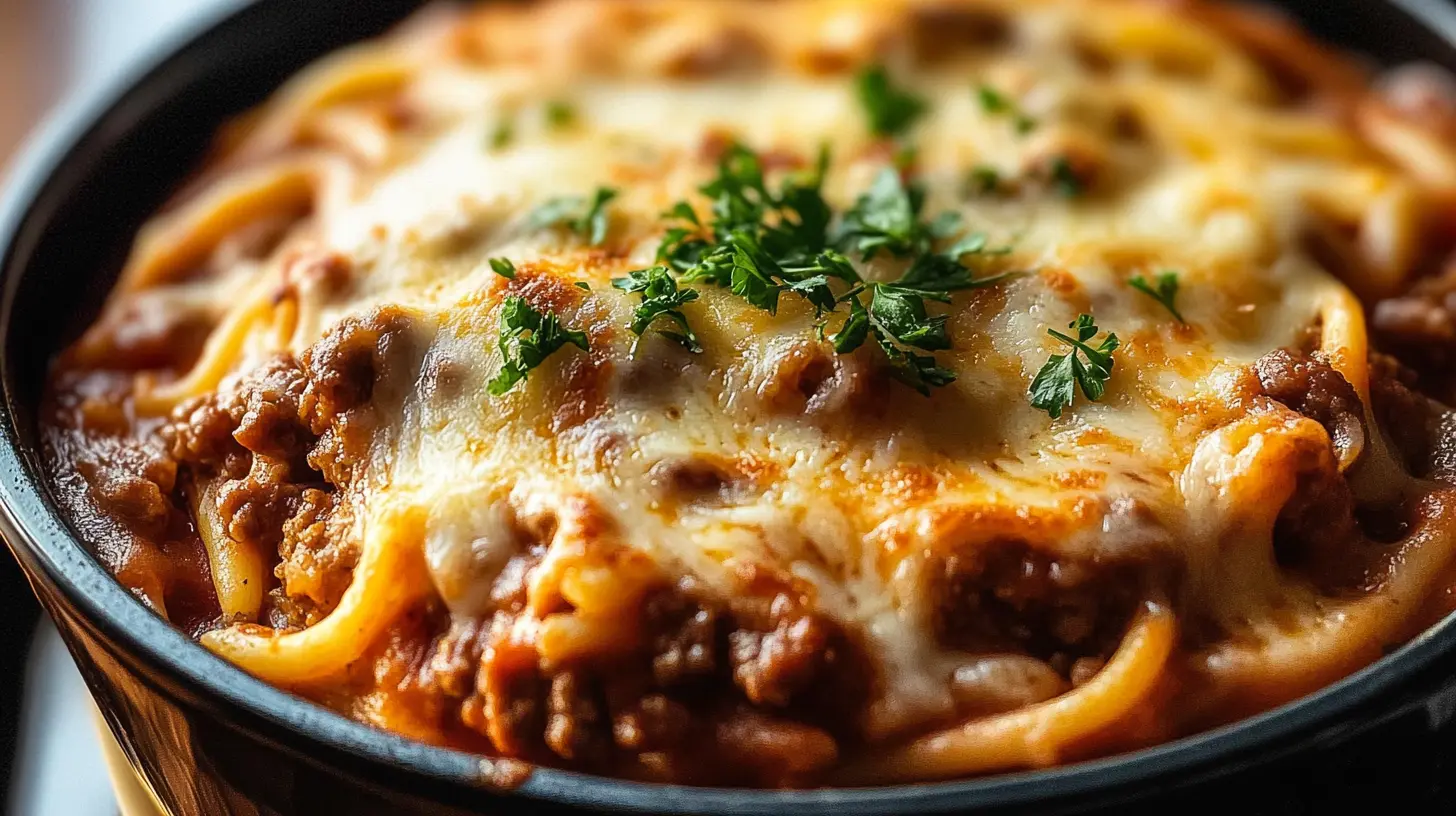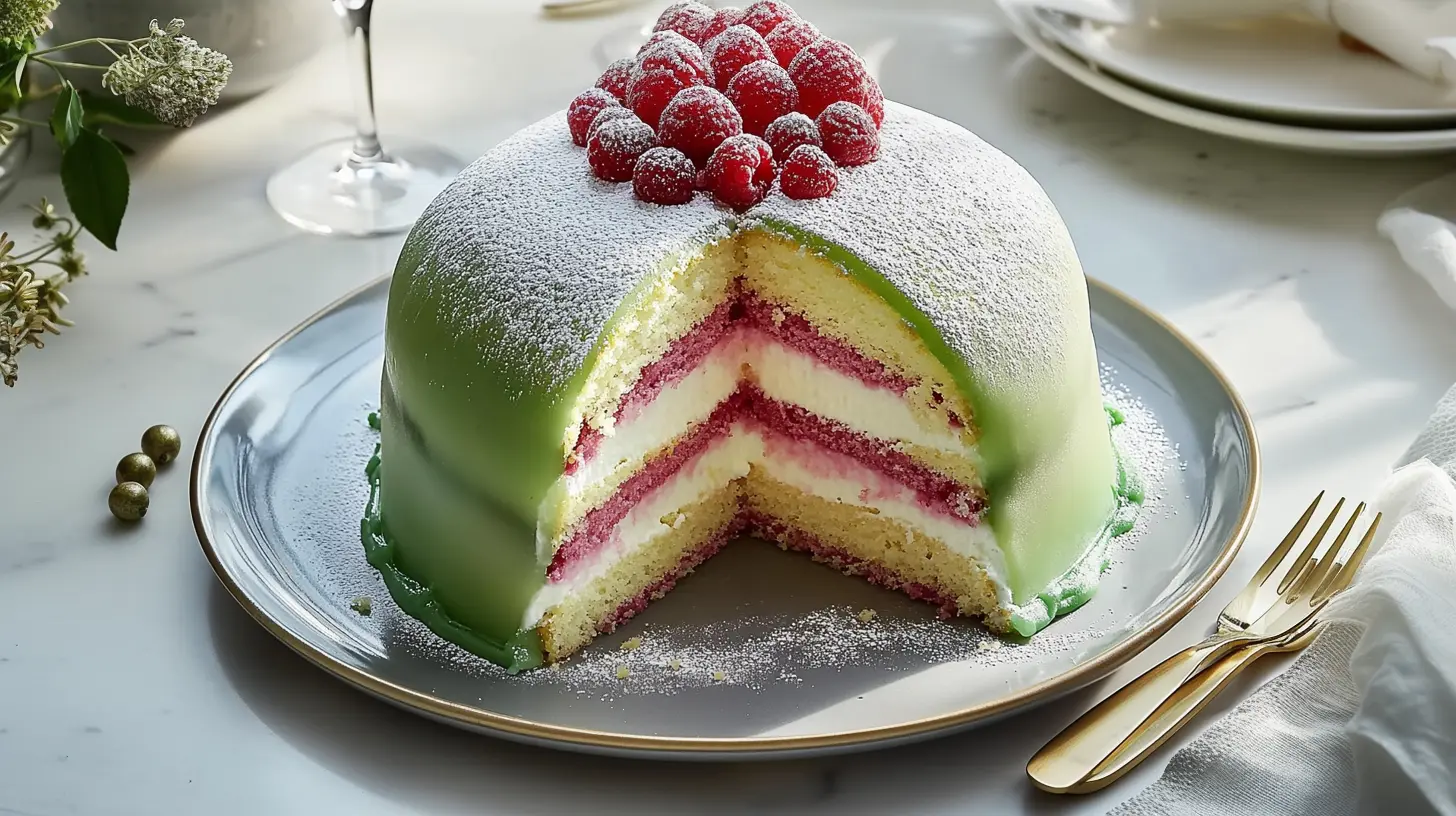Introduction to Pancake Casserole
Who doesn’t love pancakes for breakfast? Now imagine all the flavors of fluffy pancakes baked into one easy dish. This Pancake Casserole is an ideal recipe for those mornings when you need a crowd-pleasing breakfast that’s quick and simple to prepare. Whether you’re hosting brunch, feeding a family, or prepping a make-ahead breakfast, this recipe brings together all the benefits of a classic pancake breakfast with the convenience of a casserole.
Pancake casserole is not only delicious but also highly adaptable. It can be made with various toppings and ingredients to suit different dietary preferences, whether you’re gluten-free, vegan, or just looking for a healthier option. The dish is perfect for busy parents, home cooks, students, travelers, and seniors who want something both satisfying and easy. Plus, it can be prepped the night before and simply baked in the morning, making it an excellent choice for meal planning.
If you’re looking for more easy breakfast options, check out our Crescent Roll Dinner Recipes to keep meal planning stress-free!
Benefits and Advantages of Pancake Casserole
1. Ease of Preparation
One of the greatest benefits of Pancake Casserole is how easy it is to make. You don’t need to stand over a stove flipping individual pancakes. Simply pour the batter into a baking dish, pop it in the oven, and you’re good to go. This convenience makes it ideal for busy mornings when you don’t have time to cook an elaborate breakfast.
2. Healthier and Adaptable
The casserole can be customized to fit a variety of dietary needs. If you’re trying to make it healthier, swap out some ingredients to create a low-calorie, high-protein, or even a vegan version. By substituting almond flour for regular flour or using natural sweeteners, you can easily make the dish more diet-friendly.
3. Perfect for Meal Prep
Pancake Casserole is the perfect make-ahead breakfast. You can prepare everything the night before and simply bake it in the morning. This is especially helpful for meal prep or hosting brunch for a large group. Having breakfast ready to go is a great way to save time and enjoy your morning without hassle.
For another great recipe that simplifies your mornings, check out our Easy Keto Diet Shrimp for low-carb meal ideas.
Ingredients Overview of Pancake Casserole
Essential Ingredients for Pancake Casserole
To make the best Pancake Casserole, you’ll need the following ingredients:
- 2 cups all-purpose flour (or gluten-free flour for dietary needs)
- 2 tablespoons sugar (or a low-glycemic alternative like coconut sugar)
- 2 teaspoons baking powder
- 1 teaspoon baking soda
- 1/2 teaspoon salt
- 2 large eggs (or flax eggs for a vegan option)
- 1 1/2 cups buttermilk (or almond milk for dairy-free)
- 1 teaspoon vanilla extract
- 1/4 cup melted butter (or coconut oil for a vegan version)
- Toppings of your choice: Fresh fruit, maple syrup, chocolate chips, or nuts.
Dietary Substitutions to Customize Your Pancake Casserole
Gluten-Free Option:
To make this recipe gluten-free, simply swap the all-purpose flour with a 1:1 gluten-free flour blend. This ensures that the casserole still retains its fluffiness without any gluten.
Vegan Option:
For a plant-based version, use flax eggs instead of regular eggs (1 tablespoon ground flaxseed + 3 tablespoons water per egg), almond milk in place of buttermilk, and coconut oil instead of butter.
Low-Sugar:
If you’re looking to cut down on sugar, try using a natural sweetener like monk fruit or stevia instead of sugar. You can also add naturally sweet fruits like blueberries or bananas to enhance the flavor without adding refined sugars.
How to Prepare the Perfect Pancake Casserole: Step-by-Step Guide
First Step: Preheat the Oven
Preheat your oven to 350°F (175°C) and grease a 9×13-inch baking dish with butter or coconut oil to prevent sticking.
Second Step: Mix Dry Ingredients
In a large mixing bowl, whisk together the flour, sugar, baking powder, baking soda, and salt. Make sure the ingredients are well combined to ensure an even rise in your casserole.
Third Step: Combine Wet Ingredients
In a separate bowl, beat the eggs (or flax eggs) with the buttermilk, vanilla extract, and melted butter. Stir until all wet ingredients are thoroughly mixed.
Fourth Step: Combine Wet and Dry Mixtures
Slowly pour the wet ingredients into the dry ingredients, mixing just until combined. Be careful not to overmix, as this can make the casserole dense. The batter should be slightly lumpy but fully incorporated.
Fifth Step: Pour Into Baking Dish
Pour the batter into your prepared baking dish and spread it out evenly with a spatula. At this point, you can sprinkle your chosen toppings, such as fresh fruit, chocolate chips, or nuts, over the top of the batter.
Sixth Step: Bake the Casserole
Place the dish in the preheated oven and bake for 20-25 minutes or until the casserole is golden brown on top and a toothpick inserted into the center comes out clean.
Seventh Step: Serve and Enjoy
Let the casserole cool for a few minutes before slicing it into squares. Serve warm with maple syrup, extra toppings, or whipped cream. It’s perfect for a weekend breakfast or brunch gathering.
If you love easy and delicious meal ideas, you’ll enjoy our Fried Apple Pies Recipe for a sweet and satisfying treat.
Mastering Pancake Casserole: Advanced Tips and Variations
1. Add More Flavor
For extra flavor, you can add a teaspoon of cinnamon or nutmeg to the dry ingredients. You can also mix fresh or frozen blueberries into the batter for a fruity twist.
2. Protein Boost
To make the casserole more filling, add a scoop of protein powder to the batter. This is especially helpful if you’re serving it as a post-workout meal or want to increase the nutritional value.
3. Savory Pancake Casserole
If you’re more into savory breakfasts, you can easily transform this recipe by omitting the sugar and adding savory ingredients like cooked bacon, shredded cheese, and green onions. Serve with sour cream or salsa for a hearty meal.
How to Store Pancake Casserole: Best Practices
Refrigeration:
Store any leftovers in an airtight container and refrigerate for up to 4 days. You can reheat individual portions in the microwave for 30 seconds to 1 minute.
Freezing:
If you want to freeze the casserole, wrap individual portions in plastic wrap and place them in a freezer-safe bag. The casserole can be frozen for up to 2 months. Thaw in the fridge overnight before reheating.
Reheating:
To reheat the casserole, place it in a 300°F (150°C) oven for 10-15 minutes, or microwave individual portions as needed.
Nutritional Value of Pancake Casserole
Here’s the estimated nutritional breakdown per serving (based on 8 servings):
- Calories: 220
- Fat: 10g
- Carbohydrates: 28g
- Protein: 5g
- Fiber: 2g
- Sugar: 6g
This Pancake Casserole offers a well-balanced breakfast with healthy fats, carbohydrates, and protein. If you’re looking to reduce the sugar or calories, you can easily substitute with lower-calorie ingredients like almond milk or natural sweeteners.
FAQs: Frequently Asked Questions About Pancake Casserole
1. Is it better to use milk instead of water in pancake mix?
Yes, using milk instead of water in pancake mix typically results in a richer and creamier texture. Milk adds fat, protein, and flavor, which helps create a softer and more flavorful pancake. If you’re using water, the pancakes may turn out thinner and lack the creaminess that milk provides. Additionally, if you’re looking for a dairy-free option, you can substitute regular milk with almond milk, oat milk, or soy milk, which will still give the batter more body than water.
2. What’s the difference between Bisquick and pancake batter?
Bisquick and pancake batter serve similar purposes, but they have different ingredients and uses. Bisquick is a versatile baking mix made of flour, baking powder, salt, and fat (usually in the form of shortening). It’s used for pancakes, biscuits, waffles, and other baked goods. Pancake batter, on the other hand, is specifically designed for pancakes and often includes sugar and additional leavening agents. Therefore, Bisquick is more multipurpose and may require extra ingredients like milk and eggs depending on the recipe, whereas pancake batter is generally ready to use for pancakes with minimal adjustments.
3. Is pancake batter the same as all-purpose flour?
No, pancake batter is not the same as all-purpose flour. Pancake batter is a combination of flour, eggs, milk, baking powder, and sometimes sugar, while all-purpose flour is just one of the ingredients in pancake batter. All-purpose flour is a base ingredient used for various baked goods and cooking purposes, whereas pancake batter is pre-mixed with other ingredients to specifically make pancakes. If you’re starting with all-purpose flour, you would need to add additional ingredients to turn it into pancake batter.
For more information on the differences between types of flour, you can visit the Wikipedia page on flour.
4. Is it cheaper to buy pancake mix or make from scratch?
In general, it is cheaper to make pancakes from scratch. Most pancake mixes are convenient because they include pre-measured ingredients like flour, baking powder, and salt. However, if you already have those ingredients in your pantry, making pancakes from scratch can be more cost-effective in the long run. Also, making pancakes from scratch allows you to control the ingredients, avoiding preservatives or additives that are often found in store-bought mixes. While the initial cost of buying flour, baking powder, and other staples may seem higher, they last for multiple uses, making each batch of pancakes more affordable.
5. Should I add an egg to pancake mix?
Yes, adding an egg to pancake mix can improve the texture and flavor. Many pre-made pancake mixes already have powdered eggs included, but adding a fresh egg enhances the richness and helps create a fluffier pancake. The protein in the egg helps bind the ingredients together and adds structure to the batter, which results in a better rise during cooking. If your pancake mix already contains egg, adding another one may make the pancakes slightly denser but richer in flavor.
6. Why do you put cold water in pancake mix?
Using cold water in pancake mix helps slow down the chemical reactions of the leavening agents (like baking powder) and fat in the batter. This ensures that the batter rises at the right time—when it hits the hot pan or griddle—resulting in fluffier pancakes. Cold water also helps keep the fat in the batter solid until it starts to cook, which improves the texture and creates a lighter, airier pancake. Some pancake mixes are designed to work best with cold water to activate these ingredients at the optimal time during cooking.
7. Can I use Aunt Jemima pancake mix instead of Bisquick?
Yes, you can use Aunt Jemima pancake mix (now known as Pearl Milling Company) as a substitute for Bisquick in most recipes, but you may need to adjust the liquid and egg content. Aunt Jemima pancake mix is more tailored to making pancakes, so it usually includes sugar and fewer fats than Bisquick. If you’re using it as a Bisquick substitute for biscuits or other baked goods, you may need to add extra butter or shortening to achieve the right texture. Be mindful of the sugar content when substituting in savory dishes.
8. How to turn pancake mix into Bisquick?
To turn pancake mix into a Bisquick-like substitute, you can adjust the ingredients slightly. Since pancake mix usually contains sugar and is meant for pancakes, you may want to reduce the sugar content if you’re using it for savory recipes. Here’s a simple adjustment:
- Add a tablespoon of shortening or butter to every cup of pancake mix to approximate the fat content of Bisquick.
- If using for biscuits, scones, or other baked goods, consider omitting any additional sugar or reducing the amount based on your recipe. This will help you achieve a similar texture to what Bisquick offers, though the flavor may differ slightly depending on the type of pancake mix you’re using.
Conclusion
In conclusion, pancakes are a versatile and budget-friendly dish that can be customized based on ingredients and preferences. Whether you’re making pancakes from scratch or using a mix, small adjustments like adding eggs or swapping water for milk can make a big difference in texture and flavor. Bisquick and pancake mix are similar but serve different purposes, and with a few modifications, you can substitute one for the other in many recipes. Understanding the differences between these ingredients allows you to experiment and find the best method for your cooking needs.
For more inspiration, explore our Cinnamon Roll Cheesecake Recipe for a decadent dessert fusion idea!

Posted by: Hailee | June 27, 2024
I’m passionate about sharing sweet and savory recipes that I’ve meticulously tested and perfected in my own kitchen. Join me on this delicious journey to experience the best of culinary creativity.



